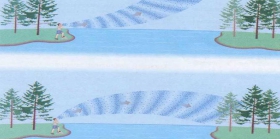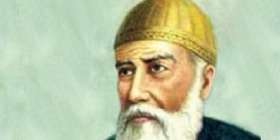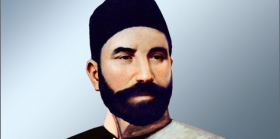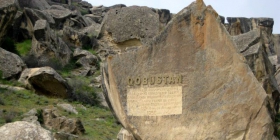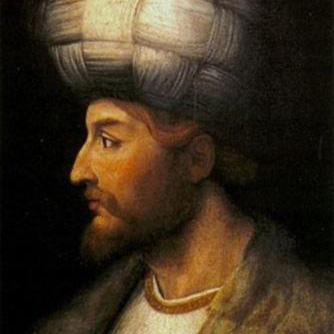 Shah Ismail Khatai is a great personality who has left a deep trace in the history of Azerbaijan by his sword and pen. He was a ruler and poet who has laid the foundation of united Azerbaijani state, raised the Azerbaijani Turkish language to the level of a state language, and created nice works in lyrical and epic styles.
Shah Ismail Khatai is a great personality who has left a deep trace in the history of Azerbaijan by his sword and pen. He was a ruler and poet who has laid the foundation of united Azerbaijani state, raised the Azerbaijani Turkish language to the level of a state language, and created nice works in lyrical and epic styles.
Shah Ismail Khatai was born in 1487, in Ardabil, to the family of Sheikh Heydar, the head of a famous sect. His grandfather from the mother’s side was Uzun Hasan, the ruler of the state of Aghgoyunlular. After his grandfather’s death, a fight for power started between Aghgoyunlu princes. After his father Sheikh Heydar was killed in a war with Shirvanshahs, he was put in a jail in Istakhr castle together with his mother Alemshahbeyim and brothers. After Ismail was freed from the prison, he studied Arabic and Farsi from Shamsaddin Lahiji in Lahijan, and mastered different sciences.
Ismail, who had lost his family as a result of palace conflicts back in childhood years, had no equal, as a commander, in horse-riding, fencing, heroism, and talking in ceremonies. He started his struggle for power back in small ages and, after his father and brother Sultanali, he headed the Gyzylbashlar (read heads) movement (they were called gyzylbashlar because of wearing a red head cover with 12 strips. When he left Lahijan for Ardabil in August 1499, he was only 12. After defeating Aghgoyunlu ruler Alvand Mirza in Sharur, he declared himself shah in Tabriz. Thus the foundation of the Azerbaijani state of Safavids was laid.
Shah Ismail successfully continued his military marches. He had significantly broadened the borders of the state of Azerbaijan. However, as he became mightier, his relations with the Ottoman Empire worsened. The tension between the two Turkish states resulted in a bloody fight on the Chaldyran Plain in August 1514. Shah Ismail’s fist defeat occurred in Chaldyran.
According to sayings, having become furious about his defeat, Shah Ismail slams his sword on the gun’s muzzle, and the muzzle comes off because of the hard blow. Having heard about this, Sultan Salim orders to bring him that sword. He slams the sword on the muzzle with all his strength, and the muzzle does not move. The Sultan says this was not the same sword. Having heard this, Ismail says “It is the same sword, but the arm is different, unfortunately”.
After this defeat, Shah Ismail stops his military marches and the remaining part of his life spends to the development of culture and improvement of the country.
Shah Ismail started his artistic creativity back in the adolescence period. He wrote most of his works in the mother tongue. He wrote the poem “Dahnameh” and couplets “Nasihatnameh”. He entered, for the first time, samples of metre based on the number of syllables – goshma, gerai and bayaty – to his work “Divan”, along with ghazals written in Aruz metre. Sweetness and beauty of the Azerbaijani language is distinctly felt in the poetry of Khatai.
The mighty ruler with the spirit of a poet died in 1524, at the age of 37.


